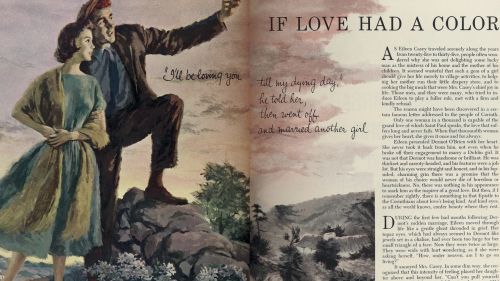In March 1954, the Irish writer, cook, and radio personality Maura Laverty wrote to her U.S. agent Helen Strauss at the William Morris Agency. Explaining that she enjoyed personal connections with the editors of particular U.S. magazines, Laverty requested that she continue to send stories directly to those editors rather than through Strauss. In the letter, Laverty uses a particularly suggestive turn-of-phrase: "There are a few markets in America on which I have concentrated. Occasionally I write something which I feel is tailored for them—and, sure enough, when I send it off, it wings straight to their pages like a homing bird to its nest.” Laverty’s framing of a given story as “a homing bird” winging its way to a U.S. magazine nest raises provocative questions about how we conceive of Irish literature published beyond the borders of the nation-state.
How are we to theorise work written by home-based Irish writers primarily for U.S. readers? How are we to understand the ways in which Irish writers exploited the commercial possibilities of their work in a U.S. marketplace? The history of mid-twentieth-century Irish literature might look very different, indeed, reoriented around a “home” comprised of the pages of U.S. magazines.
This talk uncovers the extent of Irish writers’ contributions, mostly fiction, to U.S. magazines in the period 1940 to 1975. While some recent scholarship focuses on Irish writers’ relationship with the New Yorker magazine, no existing study has attempted to uncover the volume and heterogeneity of Irish writers’ contributions to U.S. magazines; to account for this fact within and beyond existing scholarly paradigms; or to articulate the ways in which this publishing trend urges us to think differently about both Irish literature and U.S. magazines at mid-century.
Please join us in the P.F. Kluge and Pamela Hollie Seminar Room of Keithley House (102), on Tuesday, March 25, 2025.
